Comfrey medicinal (larkspur): where it grows and what it looks like, a description of the useful properties of the plant
Many plants are designed to delight us in the modern world, and one of these useful herbs is the medicinal comfrey (larkspur) from the Borage family. In past centuries, medicinal raw materials from comfrey were very popular and were considered truly miraculous. For this purpose, the plant was grown in the pharmaceutical garden in Moscow. And today, despite the increase in the arsenal of medicines due to synthetic drugs, the lark remains of interest to its consumers. Read about what comfrey looks like and where it grows, how it can be used to improve human health, as well as growing on a personal plot, read this material.
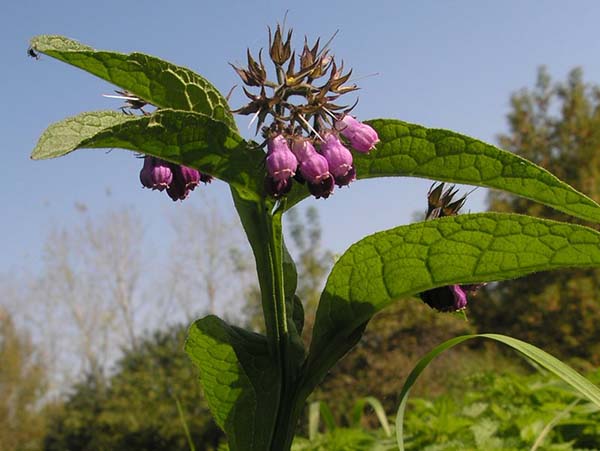
Content
Comfrey medicinal: a description of the plant, its appearance and useful properties
Comfrey (larkspur) is one of the favorite medicinal plants used in folk medicine, its rhizomes are especially healing, although leaves are also used.
Diseases of the joints (arthritis, arthrosis, osteoporosis, osteochondrosis), dislocations, bone fractures, gout, thyroid diseases - all this has a beneficial effect on comfrey medicinal. Actually, for the benefit in the treatment of diseases of the joints and bones, it is also called "larkspur".
Fundamentally important! You should know what medicinal comfrey looks like, as it is very easy to confuse it with Caucasian comfrey, which is not medicinal. The instance we need must havepink-purple flowers, but the blue-blue flowers in its Caucasian variety.
Note! Although the inflorescences of the larkspur are initially, as a rule, red, purple or lilac, they can change color to blue or even cream during the entire flowering period.
In the photo below, comfrey is medicinal:
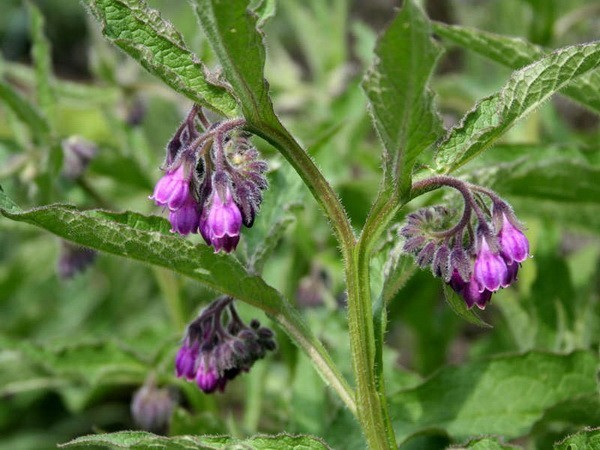
And this is already Caucasian:
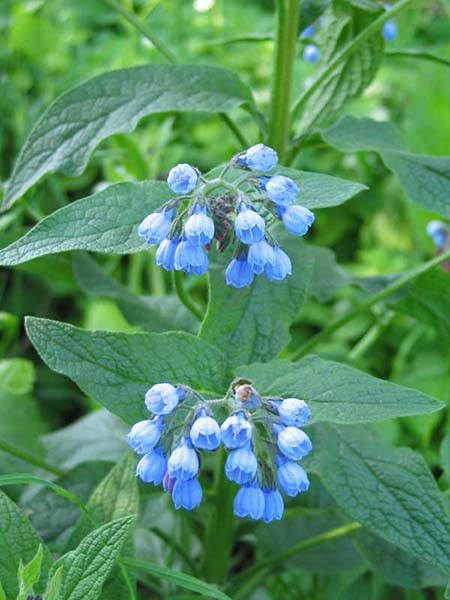
Important! Comfrey is a poisonous plant. When used externally in large doses, it can cause burns, therefore it can only be used in combination with a fat base. The leaf of the larkspur itself is also not recommended to be applied to sore joints; compresses from the infusion of the leaves are better for this.
Note! To be more precise, the alkaloids that make up it are poisonous. That is why it is not used in practical medicine.
How to make an infusion of leaves
If you bruise or pull on your ligaments, the pain can be relieved with an infusion of comfrey leaves.
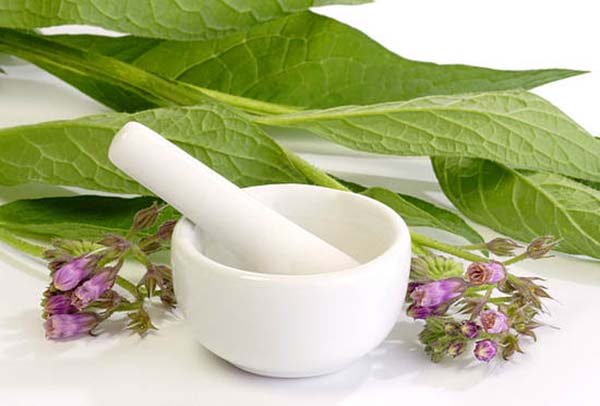
Preparing a healing infusion is quite simple: you need chopped fresh leaves (about 2 tablespoons with top), or dried (1 tablespoon) and 1 glass of boiling water. Put the leaves in a jar, cover with boiling water and cover with a towel. When the tea is brewed (after about 20 minutes), strain it through a calico and moisten well with a towel or cotton napkin. It is optimal if it is a linen fabric. Apply a warm compress to a bruise or sprain.
Preparation of infusion from the roots
Comfrey rhizome is called a catalyst for calcium metabolism in the body, in other words, the larkspur helps better absorption of calcium.
After watching the following video, you will learn the secret of how you can prepare a tincture of medicinal larkspur.
Or you can prepare an infusion of larkspur roots according to this recipe: 1 tbsp. pour a spoonful of roots with 1 glass of boiling water, let it brew for 45 minutes, drain. Apply 1/3 cup 3 times daily before meals. External use is also possible, for example, in the form of rinses or lotions.
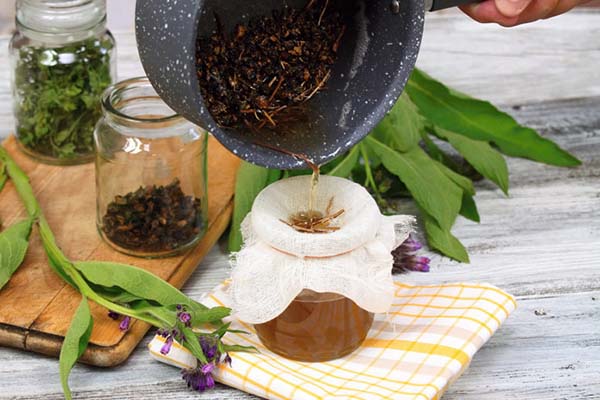
Larkspur root ointment
To prepare an ointment from comfrey roots from an intervertebral hernia, we highly recommend that you familiarize yourself with a series of videos about its step-by-step preparation:
By the way! Pharmacy stores sell ready-made ointments made from comfrey and other medicinal herbs.
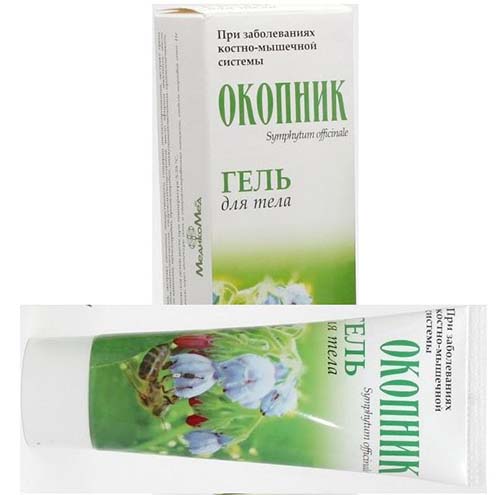
Most often, the larkspur is put up for sale in the form of a balm cream, just a warming balm and gel.

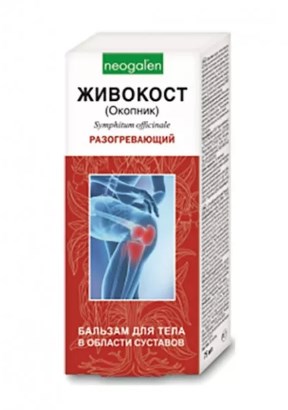
Comfrey green manure
Along with nettle, larkspur can be used as a green fertilizer (it contains a lot of potassium).
Advice! Excellent as a potash top dressing for tomatoes, cucumbers and other plants.
You can make an infusion from comfrey leaves for feeding (1/2 bucket of foliage and the same amount of water, let it ferment for 8-12 days, stirring occasionally, and then dilute the infusion in a ratio of 1 to 10 and water the plantings, or sprinkle on the leaf, but in a ratio of 1 to 5), or simply spread out under the plants.
Video: how to make fertilizer from comfrey
Where does comfrey grow: territoryspreading
Typically, this medicinal plant can be found near river banks, ditches, streams and in steep ravines. Comfrey grows in forests, it can be found among wildflowers and grasses in damp meadows. As a rule, he prefers humid low-lying areas and peat-mineral soils.
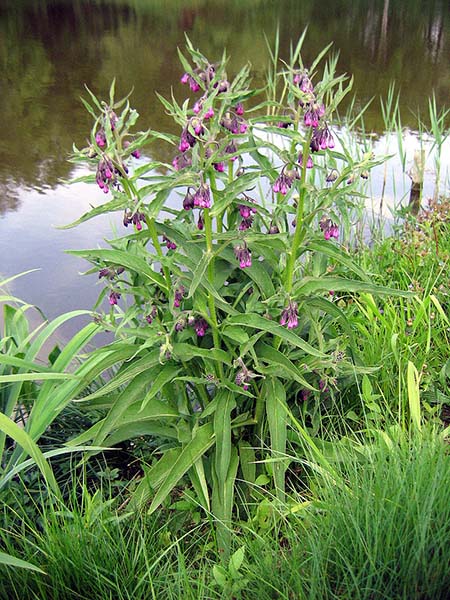
As for the geographical distribution, it is found in the steppes and forests of the Caucasus, the European part of Russia (with the exception of the Far North) and in Western Siberia (Tyumen, Tomsk, Omsk, Novosibirsk, etc.). It is also widespread in Central Asia, the Carpathians and Eastern Kazakhstan (Ust-Kamenogorsk, etc.).
Interesting! The plant got its name "comfrey" due to the fact that it often grows where there used to be military trenches. We can say, thereby, healing wounds on the ground.
Video: where does comfrey (larkspur) grow and how to look for it
When and how to collect comfrey leaves and rhizomes: harvesting a medicinal plant
Flowers, leaves and roots are collected from the comfrey. Roots are especially prized, but leaves also have medicinal properties.
The optimal time for collecting the leaves of the larkspur is the first half of the day, when the weather is dry and clear in summer. It can be harvested throughout the summer and flowering period (it usually starts blooming in May and ends in October).
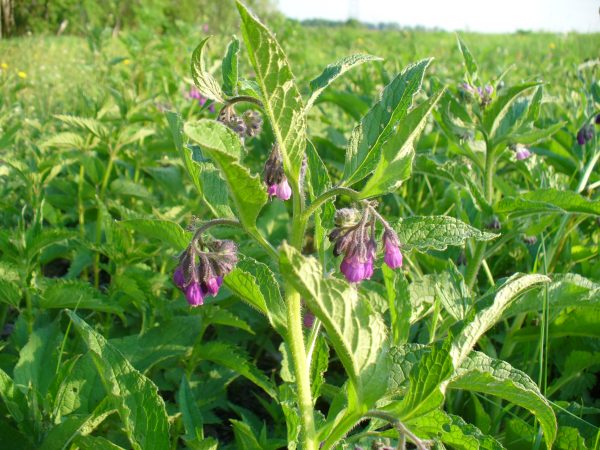
Comfrey roots are harvested in early spring or late autumn. If you decide to harvest the larkspur in the spring, then you need to be in time before the stem and flower appear, since in the summer the beneficial properties of the roots decrease due to the fact that all its forces are spent on the formation of green mass and flowering. In the fall, the roots of the larkspur are dug up after the seeds of the plant have completely shed.
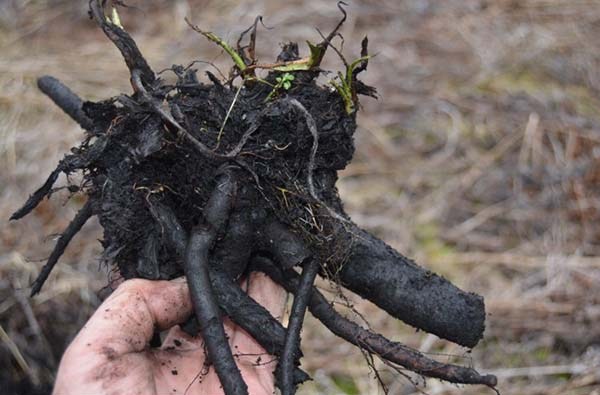
By the way! You can plant the remaining top of the mother plant back into the soil after cutting the roots.
How to prepare leaves
After you collect the leaves of the larkspur, you should start harvesting them.
Comfrey leaves are harvested for outdoor use, for example, for the preparation of ointments, compresses and poultices,
The leaves need to be cut coarsely enough (there is no point in chopping too much). Next, they should be laid out in an even thin layer on a newspaper or something more suitable to dry. The drying area should be dark (no sun), well-ventilated and cool.
When the leaves are dry (usually 3 to 4 days), you can easily crumble them to a powder.
It is better to store dried comfrey leaves in a linen bag (so that they do not cake), as well as in a cool and ventilated area.
Blank larkspur roots
Rhizomes should be thoroughly rinsed in clean water. Then break off the young and juicy roots from the mother plant. Now they need to be cut lengthwise. And then first put on a sunny place for drying in a draft, and when they dry up (they look like dried apricots or raisins), drying the healing roots of the larkspur should be continued in a dark and warm room.
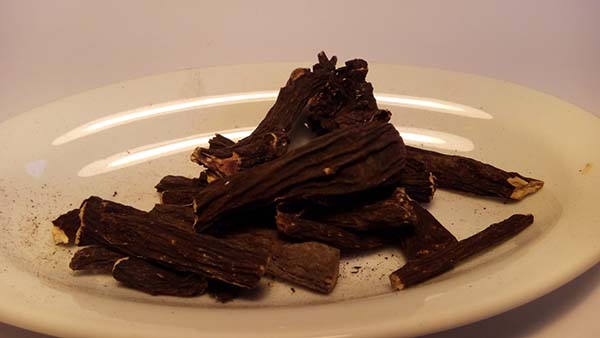
By the way! If you could not find comfrey and / or dry its roots, then you can purchase ready-made ones in packaging.
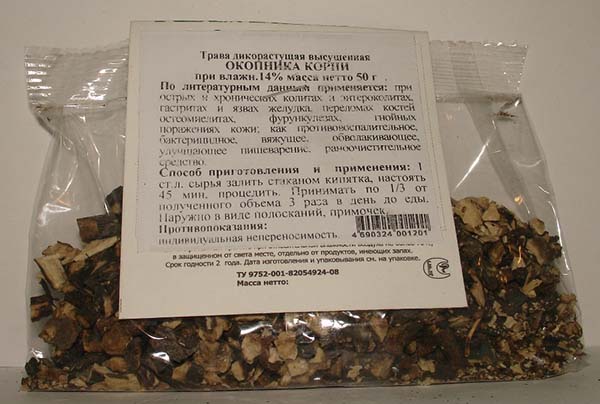
Video: how are comfrey rhizomes useful and how to prepare them
How to plant and grow a larkspur in your summer cottage
Note! If you are not sure whether it is worth planting this useful plant in your garden, then you will be interested to know that, in addition to its medicinal properties, comfrey also has excellent decorative qualities.
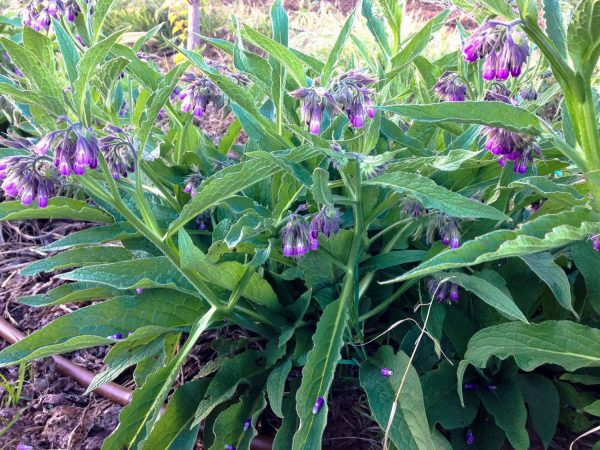
It can grow both in open places and in the shade (the plant is sufficient shade-tolerant), but it is optimal to plant in partial shade so that it is not burned by midday direct sunlight. In addition, comfrey can be successfully planted and grown right under the fence.
It is quite simple to start a comfrey on your site: you just need to dig up the plant you like in the wild (in the forest) and plant it in your garden.
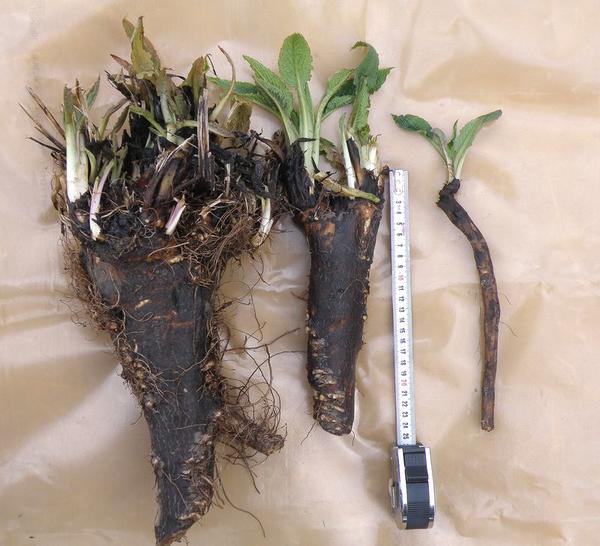
An undemanding plant prefers the most common soil, the main thing is that it is not too heavy and acidic.
Can reproduce by green cuttings with heels, and seeds... However, it is best, faster and easiest to reproduce. dividing the bush (rhizome).
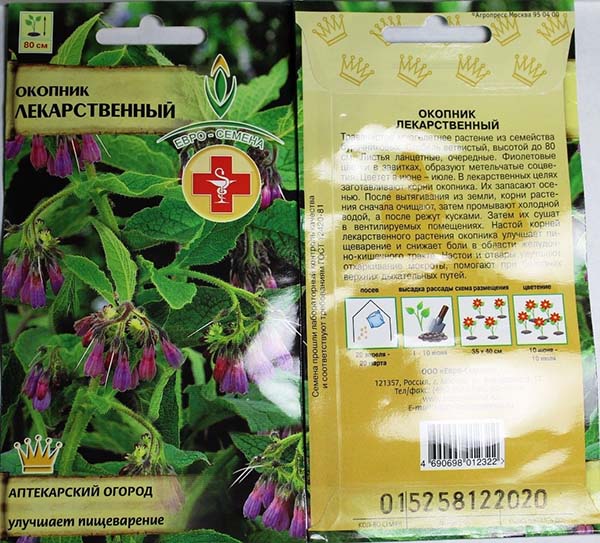
In care, this useful plant is quite unpretentious, but it is better to control it, since it can grow strongly.
Do not be afraid that the larkspur can freeze out in winter, it is capable of hibernating in actual fact in any climatic conditions.
By the way! The plant is good honey plant, and also attracts slugs.
Video: how to grow comfrey
You are missing a simple, unpretentious, but very beneficial plant at the dacha, then you should work hard and grow comfrey. This uniquely adapted to life medicinal herb with a full range of useful qualities will repay a hundredfold for all the efforts of simple care of it.

